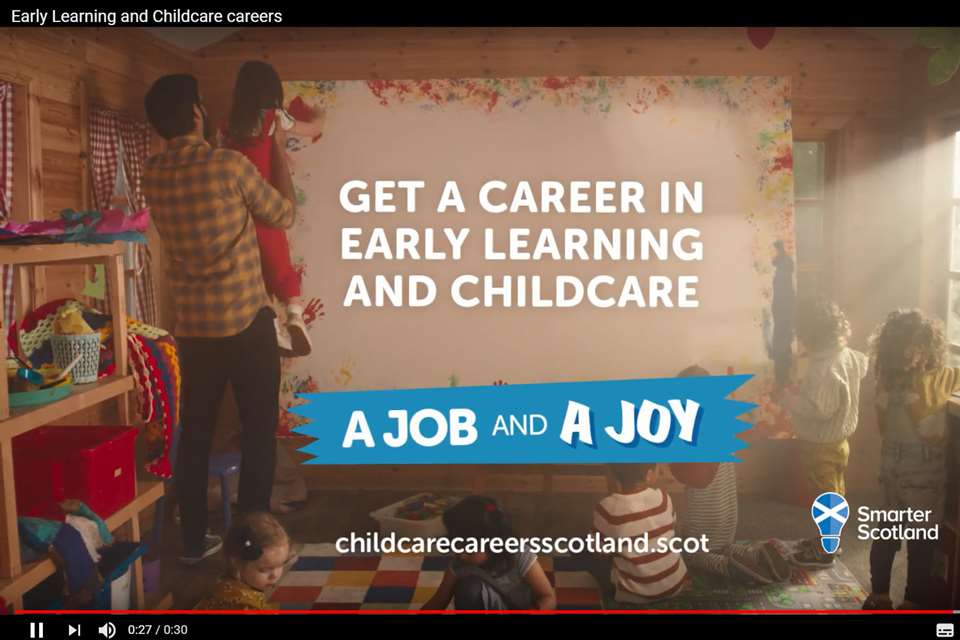Recruitment: Part 1 - Job obstacles
Charlotte Goddard
Monday, May 28, 2018
In the first of a new series on strategies for coping with the current severe shortage of staff, Charlotte Goddard sets out the key barriers facing the childcare sector

Download the pdf of this article
Cheryl McCarthy, resourcing manager at The Co-operative Childcare, has worked in the sector for 20 years. ‘I have never seen anything like it – we are in crisis,’ she says. ‘There just aren’t the people out there. We get CVs and I recognise the names immediately, because people are bouncing from one provider to another – there is no new blood.’
Despite the current pressures imposed on the sector’s very viability by 30 hours and rising costs, a lack of staff is, for many, the number-one obstacle for early years settings.
Osha Daley, senior recruitment executive at Daisy Chain Childcare Recruitment, agrees, ‘Fewer people are coming into the sector. Employers are likely to be competing over one person who has five job offers.’
Use of expensive agency staff is rife, while some settings are having to look overseas. ‘We recruit qualified early years teachers from Madrid to work as senior early years practitioners,’ says Ms McCarthy. ‘I will be interested to see if we get as many this year, given concerns about the impact of Brexit.’
Level 3
Sophie Haylock, consultant at Early Years HR, says it will take time for the sector to recover from the damage done by the requirement for Level 3 staff to have GCSEs in English and maths, which was broadened a year ago to include functional skills. ‘Three years of potential talent was wasted,’ she says. ‘There have been courses that closed.’
In 2016, analysis of Ofqual data by Nursery Worldwith CACHE revealed the extent of the damage. The number of candidates completing the Level 3 early years educator (EYE) courses fell by 55 per cent, from 18,000 in 2014 to 8,050 in 2016. This drop is now showing itself in the overall composition of the workforce: the Education Policy Institute (EPI) and Ceeda have both produced figures showing a drop in the proportion of Level 3s (the EPI found that while 75 per cent of the workforce had at least a Level 3 qualification in 2016, in 2015 the figure was 83 per cent.)
The latest confirmation that the pipeline is drying up comes from the NDNA, whose workforce survey earlier this year showed the proportion of Level 3 staff is now 66 per cent.
Adding to this problem is confusion about what EYE requirements are, despite the Government’s functional skills U-turn. ‘Colleges are not getting the applicants,’ says Ms McCarthy. ‘Many are still stating on their websites that Level 3 requires GCSE maths and English. It’s putting applicants off.’
Suzi Gray, technical advisor, health and social care at City & Guilds, says the majority of providers have amended this information where necessary, but are free to set their own entry criteria. ‘There is a long history of demand for additional requirements in relation to maths and English, particularly as part of entry criteria onto qualifications that are delivered as part of college programmes, most of which enable progression to further and higher study.’
She adds that 44 per cent of employers are in favour of the GCSE requirement, according to a 2017 PACEY survey. ‘Employers themselves are of course free to set additional requirements when recruiting, and therefore training providers and colleges should consider this when thinking about what type of entry requirements they choose to have in place for early years qualifications.’
Respondents to the NDNA survey said Level 3 applicants often did not have relevant knowledge or experience, with many blaming this on their training. Online Level 3 courses are often not ‘full and relevant’ and so do not count as a ‘licence to practice’, says Ms Daley.
The DfE maintains a list of full and relevant courses, which will be badged ‘Early Years Educator’, so employers should not be confused about acceptable qualifications, says Ms Gray. However, some still are, maintains Ms Haylock.
‘I know of a nursery manager who saw a course advertised on Wowcher for £17 and was asking whether that would be full and relevant,’ she says. ‘There should be an audit of childcare-related courses, and those that are not full and relevant should be made to carry in big lettering “this does not qualify you to work in a nursery”.’
Costs
The cost of training has rocketed: a further barrier to recruitment and retention. A Pacey report back in 2015 found that the cost of Level 3 courses had increased more than sevenfold in three years, from £250 in 2012 to £1,900 in 2015, driven by loss of subsidies from local authorities. The cost of training sees smaller nurseries losing out to the bigger chains, says Ms Daley. ‘The large groups have the manpower to offer career development packages that support people through qualifications.’
Ms Gray says, ‘Typically, public funding is based on the overall size of the qualification and, in the case of the new apprenticeships, relative to the nature and complexities of the associated assessment strategy. While the new apprenticeship for the Early Years Educator is not yet ready for delivery, the new funding rules support a model which may enable employers to drive best value. In circumstances where employers or learners are not accessing public funding and are meeting the costs of qualifications and CPD themselves, it is important to research what is available and the qualification and delivery methods which best meet their needs.’
Apprenticeships and Level 6
Many nurseries welcome apprenticeships as a good way to ‘grow your own’ talent and attract young people into the industry. However, requirements such as the need for at least 20 per cent of training to take place off the job, obliging settings to find cover, are making it difficult for nurseries to take this route. Coupled with this is uncertainty over the development of new apprenticeship standards: while Level 3 standards have finally been agreed after a bumpy ride, the sector is still lacking an assessment plan.
However, Ms Gray is positive about the effect the new standards will have. ‘The new Level 3 apprenticeship standard should help employers feel they have more involvement in the delivery and assessment of high-quality apprenticeships, with a new Level 5 and a Level 6 Degree Apprenticeship on the horizon,’ she says.
Government efforts to increase the number of graduates elsewhere are hitting trouble, though. The number of entrants to its Early Years Teacher Status programme has continued to fall: this academic year there were just 595 recruits, 40 per cent of the Government’s target. The Early Years Workforce Strategy promised four courses of action to look at raising the status of Early Years Teachers, including consulting on EYTs being able to lead classes in schools, but nothing has yet materialised.
Salaries
While training and qualifications are a major barrier to recruitment and retention, the most significant factor is low wages. ‘I speak to candidates who say they are looking for £20k minimum and some nurseries just can’t offer that,’ says Ms Daley. Candidates are also looking for flexible working, which nurseries find difficult to offer. Many early years workers are quitting the sector altogether, while others are becoming nannies.
While many settings cannot afford to pay the salaries employees are looking for, some are doing so out of desperation, creating a ‘wages war’. ‘Some providers are so desperate they are putting up salaries, but it is not sustainable, and they are likely to go bust,’ says Ms McCarthy.
A positive note?
There are some causes for optimism. City & Guilds and CACHE have been working with the DfE, other awarding organisations and employers on projects to highlight career progression. One of these is set to launch shortly on the DfE website.
‘We have developed innovative and useful tools and resources that are designed to help highlight the type of career progression available within early years, and the types of qualifications and development opportunities that will support that progression,’ says Ms Gray. ‘We worked with these same partners to develop the new Level 2 full and relevant criteria, which will soon underpin a new Level 2 qualification. The Government’s plans to introduce the new Early Years T-Level qualification in 2020 may also provide the opportunity to develop a new, innovative approach to Level 3, that could re-energise and reinvigorate interest from new entrants and employers alike.’
Another campaign is being led by Tinies Childcare to try to spark an interest in the early years in schools. Called Inspiring a Future in Childcare (www.tinies.com/inspiring-a-future-in-childcare), early years professionals visit schools to talk to children about their career. ‘It won’t impact us now, but three to five years down the line, it will,’ says Ms McCarthy. ‘After the visits, 71 per cent of pupils said they would consider a career in childcare.’
AT A GLANCE
Barriers to recruitment
- Plummeting numbers signing up to training courses, especially at Level 3 and Level 6, driven by continuing confusion over the GCSE requirement at Level 3 and the relevance of courses, rising costs of training, and continuing lack of parity between Early Years Teachers and those with QTS at Level 6.
- Chronically low salaries.
- Long hours and lack of flexible working.
- Lack of an obvious career path, particularly in smaller settings.
- Delay in new apprenticeship standards, and difficulties in delivering apprenticeships.
Potential causes for optimism
- Development of new apprenticeship standards, seen as a relatively well-funded, high-quality alternative to the frameworks they replace.
- Development of a new Level 2 qualification.
- Launch of careers pathway project.
- Forthcoming Early Years T-Levels.
- ‘Inspiring a Future in Childcare’ campaign.
*Future instalments of this series will look at strategies to help boost recruitment of quality candidates, including targeting more men and those from abroad, and practical and strategic approaches, such as developing a USP











